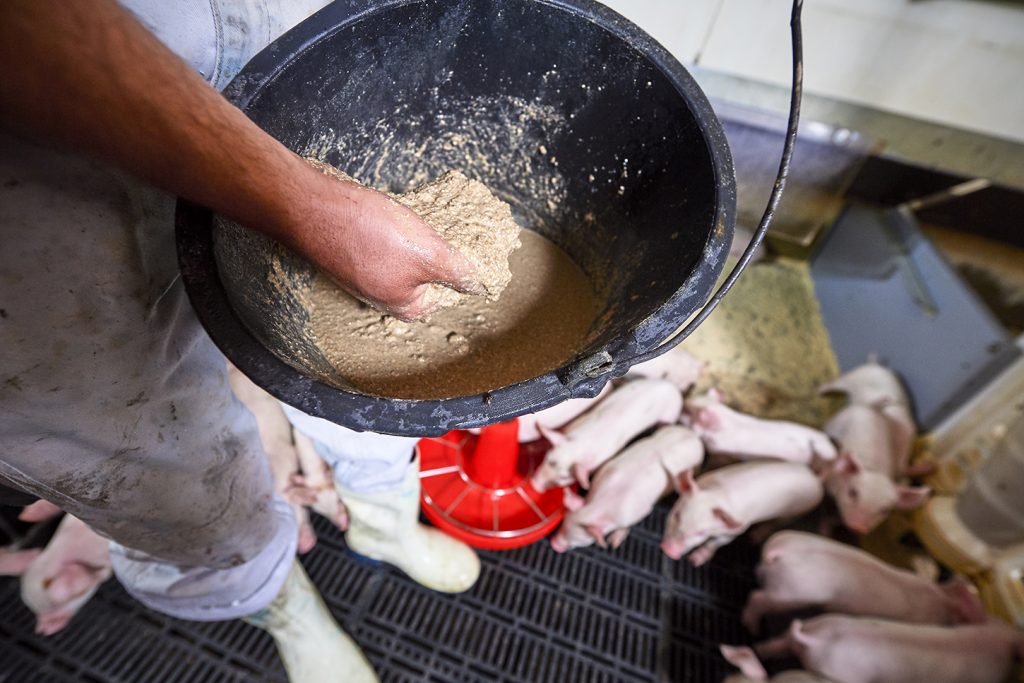Feeding DanBred Piglets
The objective during the nursery to weaner transition period is to ensure that a gradual and gentle change from the milk-based diet to the non-milk based diet to facilitate the best possible adaption for the digestive and immune systems and ensure that all criteria for optimal growth are met in the most sustainable and economic way.
Production targets
- Healthy uniform piglets in with optimal growth.
- Ensuring High daily gain and Low feed to gain conversion.
- Consistently low mortality with reduced consumption of antibiotics.
Young piglet nutrition
A successful piglet feeding strategy from birth – 30 kg can be set in three to four feeding phases, depending on the desired weaning weight. Piglets weaned below 5.5 kg are too small for a standard pre-starter diet and therefore need a special pre-starter diet with extra milk products.
The nutrition focus for young piglets is on highly digestible and functional diets for the piglets to develop a resilient microbiota and to grow their intestines for maximum nutrient absorption surface. A healthy gut is the key to a healthy pig. The lengths of the small and large intestine are tripled, at the end of the nursery period and the weight even more. This early growth process will determine the piglets’ later digestive capacity and efficiency.
|
|
|
To stay healthy during weaning, piglets need to eat approximately 0.5 kg of dry feed (Pre-starter diet) before weaning in the farrowing unit to grow enough microbiota to stay resilient to changes at weaning. The weaning weight drop is stronger for piglets not eating enough dry feed (Pre-starter diet) before weaning. They very often get diarrhoea, due to not eating enough during the first day’s post-weaning and then overeating later.
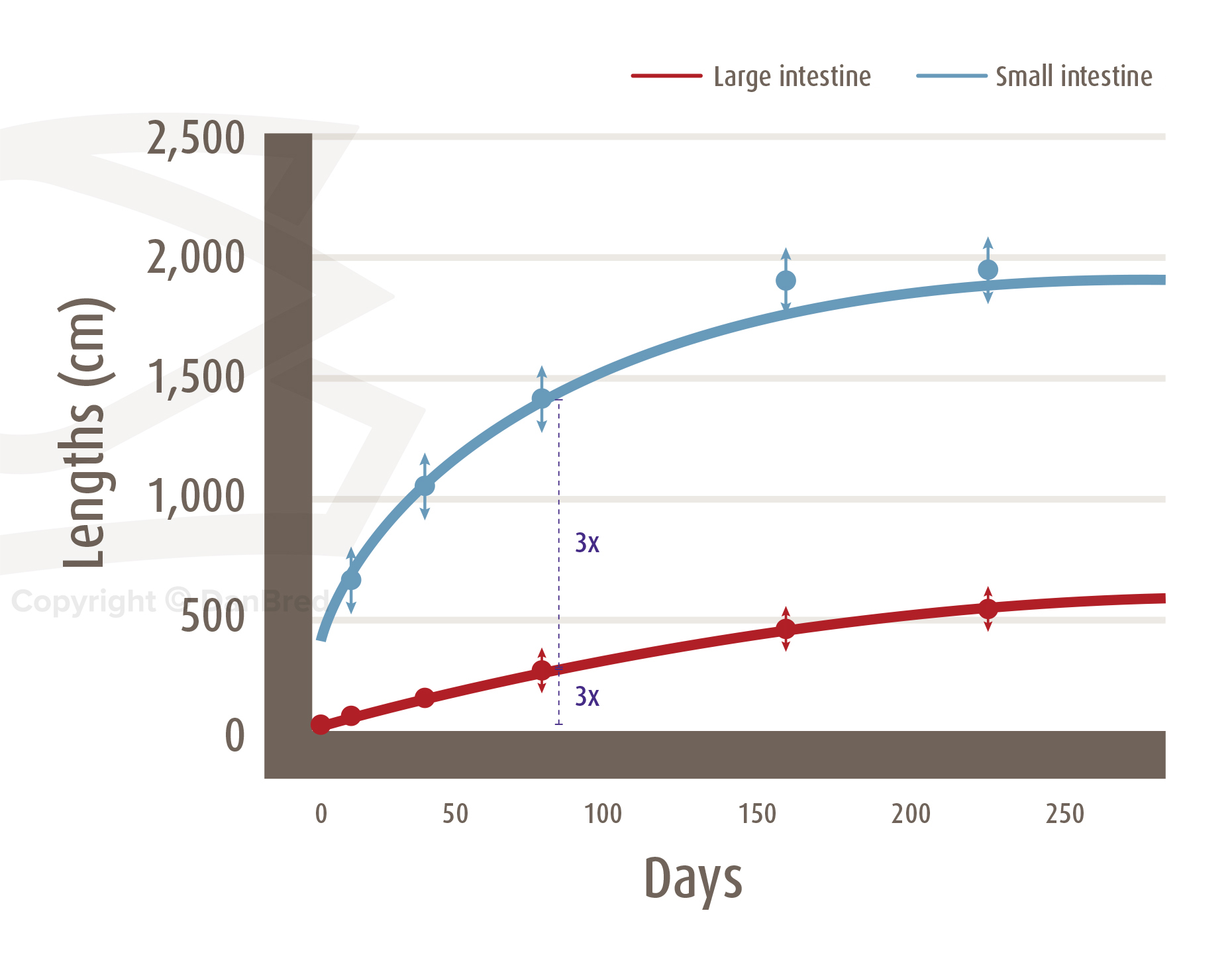
The best way to stay healthy during weaning is to prepare the gut with nutrients that will support gut development and avoid anti-nutritional nutrients in the pre-starter diet. All parts of the pre-starter diet must be carefully selected because the anti-nutritional factors from individual ingredients can add up to a combined negative gut health effect. If the level of anti-nutritional factors is too high, the health will be impaired and loss in performance and uniformity will show, and maybe even increased mortality.
The piglet itself is undergoing a natural change in enzyme production as it grows. In the figure below, the development in enzyme capacity in the first weeks of age is shown.
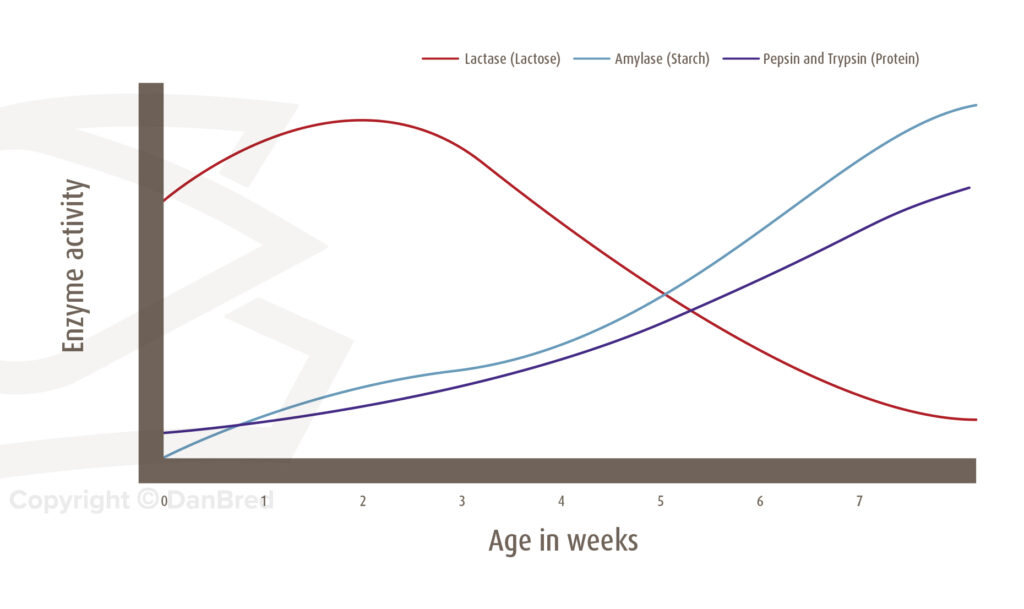 These changes in enzyme production follow the age of the piglets, and we need to adapt the feed strategy accordingly. When the piglets are 15 kg and approximately 8 weeks of age, they are considered to have a matured enzyme capacity to digest standard ingredients.
These changes in enzyme production follow the age of the piglets, and we need to adapt the feed strategy accordingly. When the piglets are 15 kg and approximately 8 weeks of age, they are considered to have a matured enzyme capacity to digest standard ingredients.
Lactose: Lactase enzyme drops very fast after 3 – 4 weeks of age.
Starch: Amylase enzyme production increases fast after 4 – 5 weeks of age.
Protein: Pepsin and Trypsin enzyme production increase slowly until 12 weeks of age.
Nutrient requirements
Trials are each year conducted to test if, the level of nutrients fits the requirement of pigs. Many requirements are decided from a maximal growth point of view, others are set to get the best economy. Comparing requirements between different formulation systems is difficult because of different conditions. The most commonly used systems are NCR, CVB, INRA, SEGES, etc.
Most requirements set for immature pigs (less than 15 kg) are based on trials with mature pigs (which weigh more than 20 kg). This makes it even more difficult because the digestibility of protein, amino acids, energy is not correct and once again know-how is needed in formulating diets for pigs below 15 kg.
| Energy, per kg feed | Piglets 6-9 kg | Piglets 9-15 kg | Piglets 15-30 kg | |
|---|---|---|---|---|
| MJ, ME/kg feed | 14.5 | 14.0 | 13.6 | |
| MJ, NE/kg feed | 10.7 | 10.3 | 10.0 | |
| Danish Feed Units, (FU) sow/kg | 1.20 | 1.16 | 1.12 | |
| Basic nutrients, digestible per kg | ||||
| Protein, % | 17.7 -19.1 | 17.1 – 19.5 | 18.4 – 20.4 | |
| Lysine. SID g/kg | 13.2 | 12.8 | 12.9 | |
| Digestible phosphorus g/kg | 4.0 | 3.7 | 3.4 | |
| Calcium, g/kg | 8.4 | 9.3 | 9.5 | |
The full DanBred nutrient tables can be found here.
Ingredients
Using high-quality ingredients in young animal nutrition is important for piglets up to 15 kg, however, choosing the best combination can be difficult. For many years, piglets were fed animal protein, (e.g., fishmeal and animal by-products) because the availability of high-quality ingredients was low. In the last decade, this has changed to vegetable proteins such as soy, potato, beans etc.
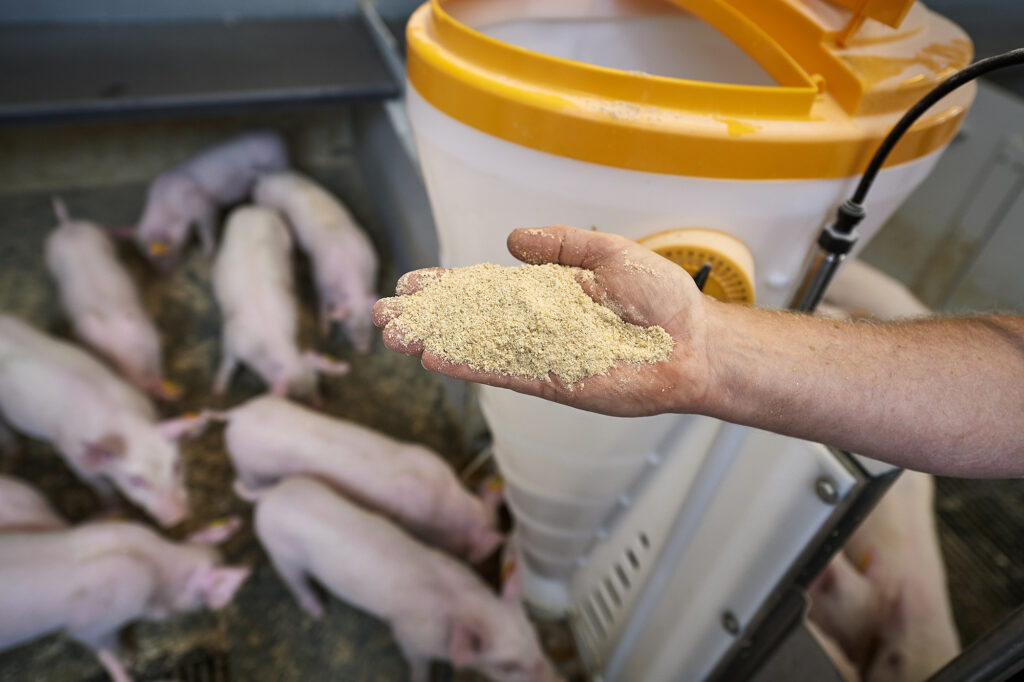 |
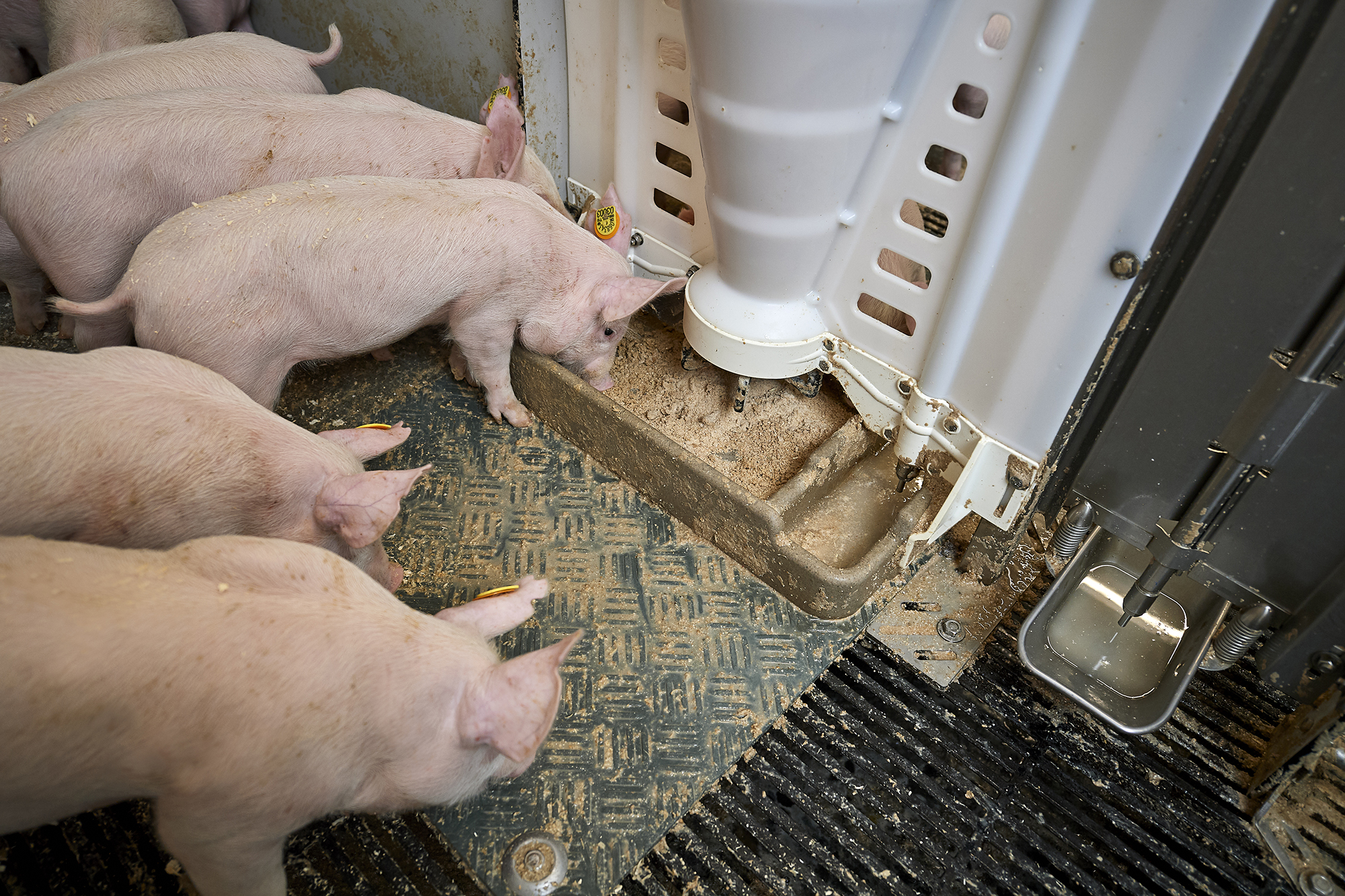 |
Selecting high-quality ingredients means more insight into how raw materials differ in quality. Quality is the consistency in crude protein, energy, digestibility, level of Anti Nutritional Factors (ANF), particle size etc.
Feed Additives
Additives are necessary on top of the ingredients to solve specific problems that ingredients are not able to solve completely. Examples of this include;
- Bacterial control using organic acids and probiotics
- PH-reduction in the stomach for better protein digestion
- Phytate breakdown to better utilize phosphor, calcium and other minerals bound to phytate
- Other enzymes to help the digestion of the starch and NSP fraction
- Fibres to be fermented into butyric acid.
SEGES Innovation, the Danish Pig Research Centre has compiled all their trials on additives and compared the effect of additives. All additives show a positive performance effect, which is ok, but it is important to remember that the effect on performance must be higher than the cost of the product. In general, we need fewer additives when using clean and functional ingredients, but on the other hand, additives can help solve specific health problems.
| Product type | No. of trials | % Change | |
|---|---|---|---|
| ADG | FCR | ||
| Antibiotics, AGP | 13 | +8.6 | -3.6 |
| Acids/Salts of acid | 45 | +6.6 | -2.3 |
| Probiotic | 13 | +2.2 | -1.8 |
| Aroma, Essential oils | 23 | +2.5 | -1.4 |
| Enzymes | 9 | +2.0 | 0 |
| Oligosaccharides | 4 | +0.9 | -2.2 |
Data from SEGES Innovation, Danish Pig Research Centre, 1980-2016
Water
Clean water is the most important ingredient- allow for a maximum of 10 pigs per nipple or cup, with a flow rate of at least 0.5 – 1.0 L/min.
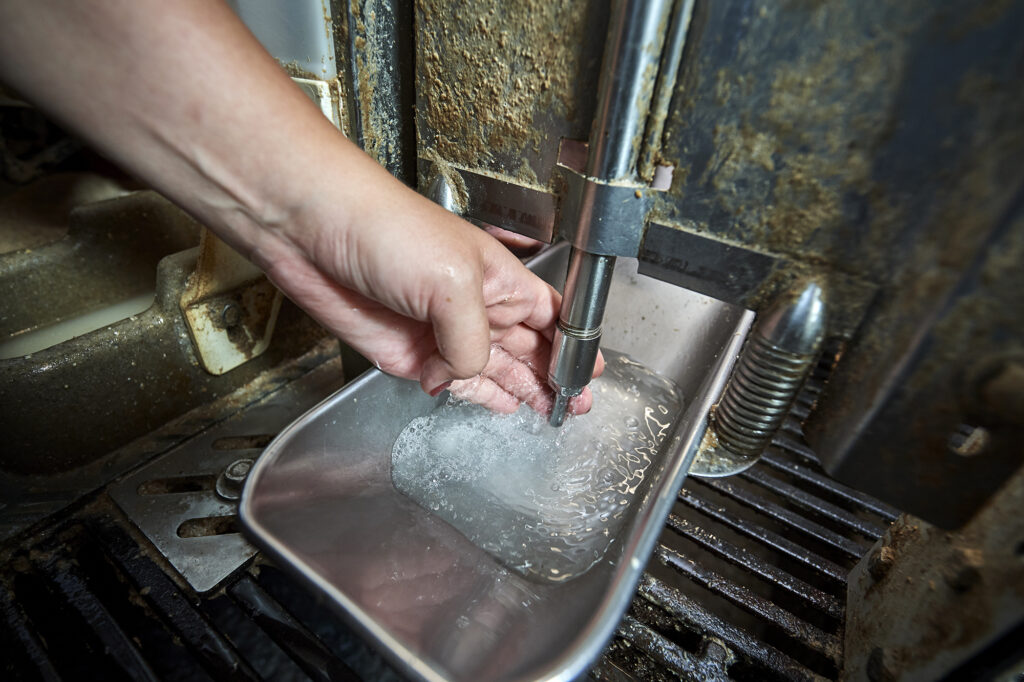 |
 |
Particle size
For the best feeding economy, the particle size recommendation for piglets is 80 % below 1 mm and 20 % between 1-2 mm. Increasing the particle size is ok when gut health problems need to be solved.
Economic Aspects to Consider
Feeding strategy has a huge effect on the economy. Always consider the total feed cost per pig and the expected performance value. The optimal strategy is to make sure the last diet in the nursery is the cheapest possible, due to the bigger amount of feed compared to previous diets.
 |
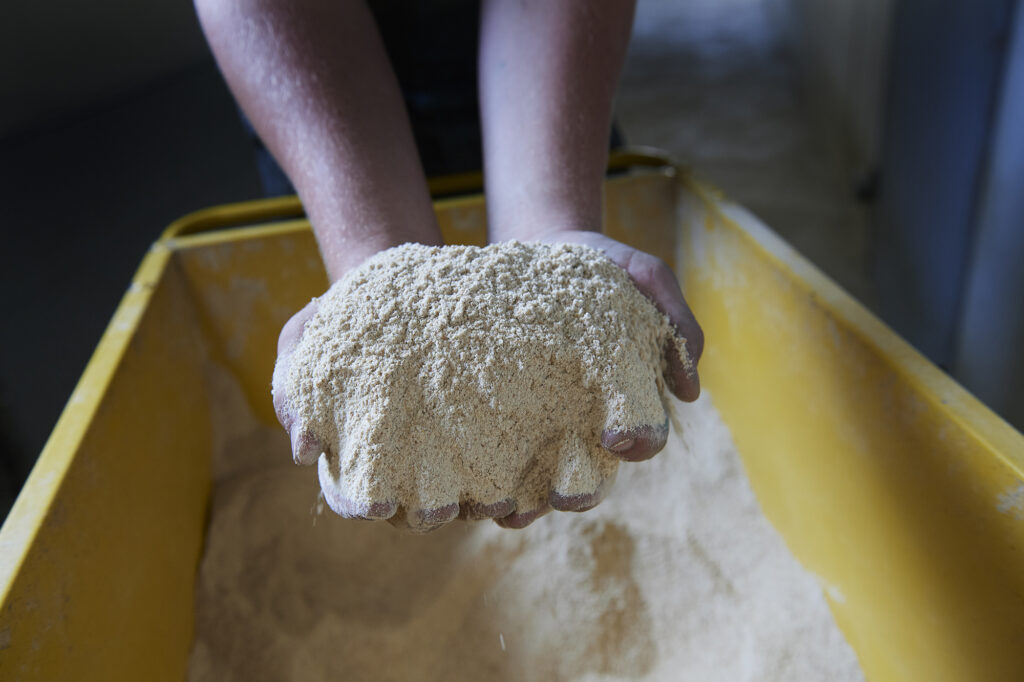 |
It is our recommendation to always follow the phase feeding strategy, as shifting to the next diet too quickly (because it seems cheaper) will always impair the economy for the smallest pigs in the pens.
Table 1: A cheap phase feeding diet from 15 – 30 kg
| Phase | 2 – 6 kg | 6 – 9 kg | 9 – 15 kg | 15 – 30 kg | Total (kg) |
|---|---|---|---|---|---|
| Kg feed | < 1 | 5 | 10 | 24 | 39 |
| Feed cost | High | High | Medium | Low | 100% |
Table 2: A medium cost phase feeding diet from 12 – 30 kg
| Phase | 2 – 4 kg | 4 – 8 kg | 8 – 12 kg | 12 – 30 kg | Total (kg) |
|---|---|---|---|---|---|
| Kg feed | < 1 | 4 | 6 | 28 | 39 |
| Feed cost | Extremely High | High | Medium | Medium | 108% |
As seen in the tables above, the feed cost difference in the two examples is an extra 6-8 % (table 2).
Do not make the switch to the next diet too fast in order to save money, as you will end up using expensive ingredients in the last diet or the piglets will suffer from high anti-nutritional factor levels before they are ready to handle it.
Feeding strategy
Both the caretaking of piglets and selecting the right feeding strategy are equally important. The combination of ingredients, additives, and nutrients is highly important, and if the quality of ingredients is low or inconsistent, it will take extra additives to compensate.
The public demand to lower the use of antibiotics and the EU government ban on zinc oxide is a challenge to both choose the better feeding strategy, and to deliver the best management. Finding the best combination of input and output is all about maximising the economy. A wrong feeding strategy will eventually increase the workload, reduce performance and profit.
Phase feeding
The changes in feeding phases must fit into different phases of piglet life. Phase feeding strategy is a choice between meeting the piglet requirement, in the best way, at any time during growth and not handling too many different diets on the farm.

A piglets small intenstine is developed over time. It is important that the feeding strategy meets the requirements for the small intenstine to grow and develop, as this will result in a piglet growing into a pig that is able to digest and utilise the nutrients in the feed to the best of their ability, allowing them to reach their genetic growth potential.


Feeding phase 1: 1 – 9 kg
A pre-starter diet as creep feed over weaning to 14 days past weaning. This phase includes:
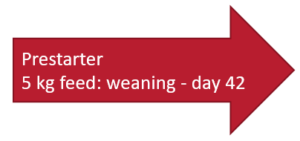
- Colostrum, day 1, 100 – 250 ml.
- Milk, day 1 – weaning
- (Super) Pre-starter, 0.5kg: day 5 – weaning + 2 days
In this phase, the small piglets grow very fast (particularly the intestines) and any anti-nutritional factor will negatively feedback on the dry feed intake before weaning. Ingredients causing inflammation, protein fermentation, and pathogenic bacterial growth must be excluded. Limiting the early growth of the intestine will apply a life-long negative effect. The early development of the microbiota is critical, and the resilience will prevail over weaning to slaughter.
Feeding phase 2: 9 – 15 kg
This phase is important and works as a transition from the pre-starter diet to the last diet. Here we need to introduce the ingredients in the last diet with anti-nutritional factors. As a rule, we select 50:50 from high/standard quality protein ingredients.

In this phase, the small piglet is growing rapidly, and enzyme production capacity is increasing. Introduction to ingredients in the last diet, starting the adaptation of the gut to anti-nutritional factors, but keeping the important highly digestible and functional ingredients as a base for the transition.
The transition phase is often shortened to 12 kg instead of 15 kg to save the expensive diets. This is not the ideal choice, because often the last diet includes 2 – 4 % of expensive high-quality ingredients.
Feeding phase 3: 15 – 30 kg
The piglet has an almost fully matured enzyme capacity and feeding a standard grain + soy diet is possible and the most economical.
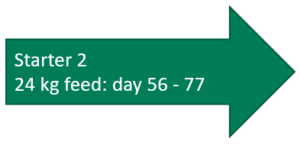
The third phase is the most important because the 24 kg feed is 60 % of the nursery diets. A standard grain + soy diet will allow for a low-cost diet without any high-quality ingredients. If any level of high-quality ingredients is necessary for the last phase, the diet composition in the first two diets includes too many anti-nutritional factors.
Feeding phase 1 – 2 – 3 key messages
In phase 1, feed ingredients must be highly digestible and functional ingredients with very low anti-nutritional factors for the best development of the digestive system.
In phase 2, a transition diet overlaps from high quality to standard quality ingredients.
In phase 3, feed ingredients must be standard quality like grain + soy for the mature pig.
Good management routines
Prevention is the key to a successful management program, and this includes the correct handling of feed, water, environment, and piglet care.
At weaning and the first weeks after, is a stressful period for piglets. They are separated from their mother and moved to a new pen, mixed with piglets from different litters, new feeders, and diets in different forms, and then left alone without help. On top of that, a percentage of the newly weaned piglets will have problems learning to start drinking and eating in the first days after weaning. The first weeks post-weaning is a critical stage and how we manage it will influence the percentage of full value market pigs.
Important routines the first weeks after weaning are:
- All pigs must be weaned into an empty, cleaned, disinfected, dried, and heated section with the same age of piglets.
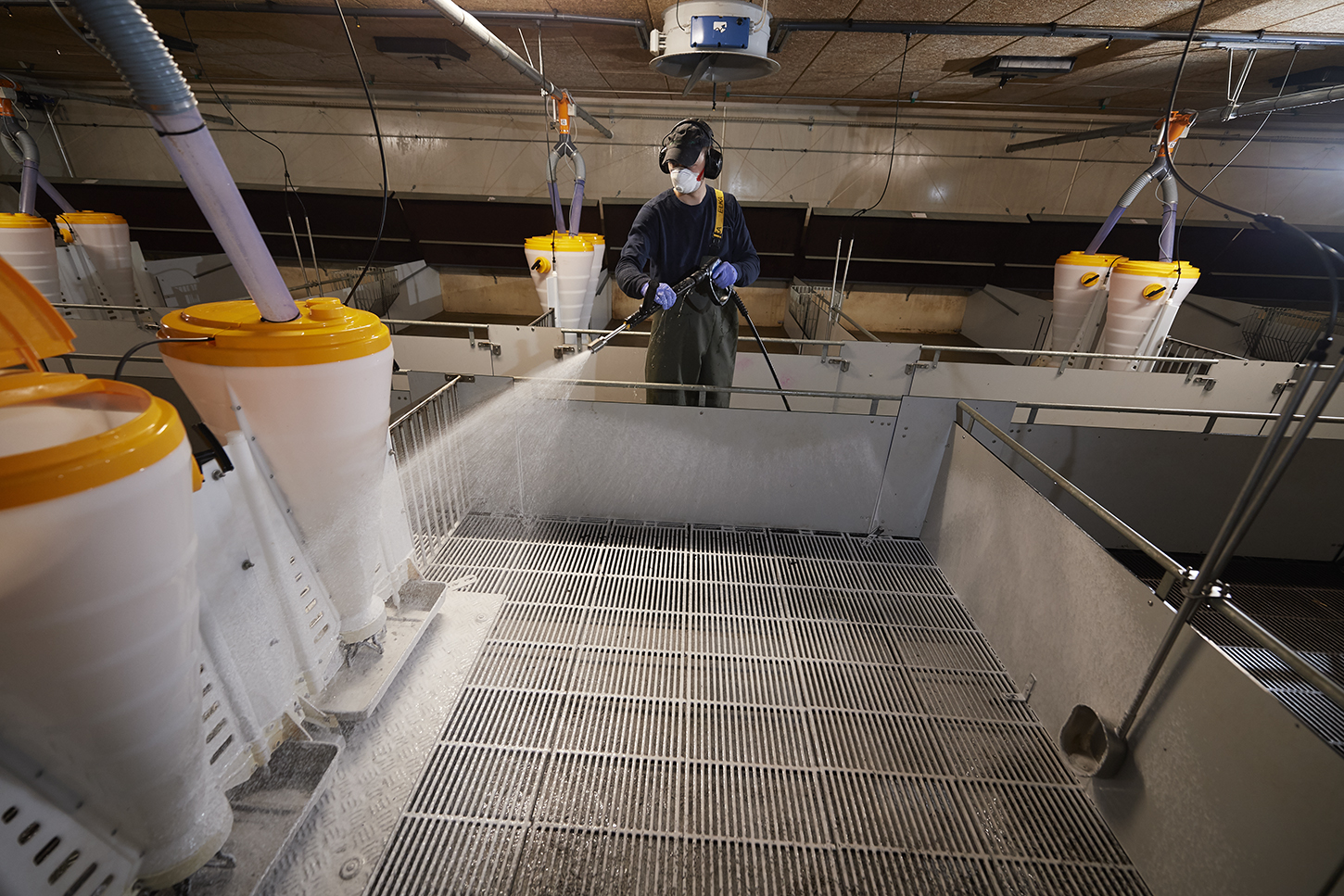 |
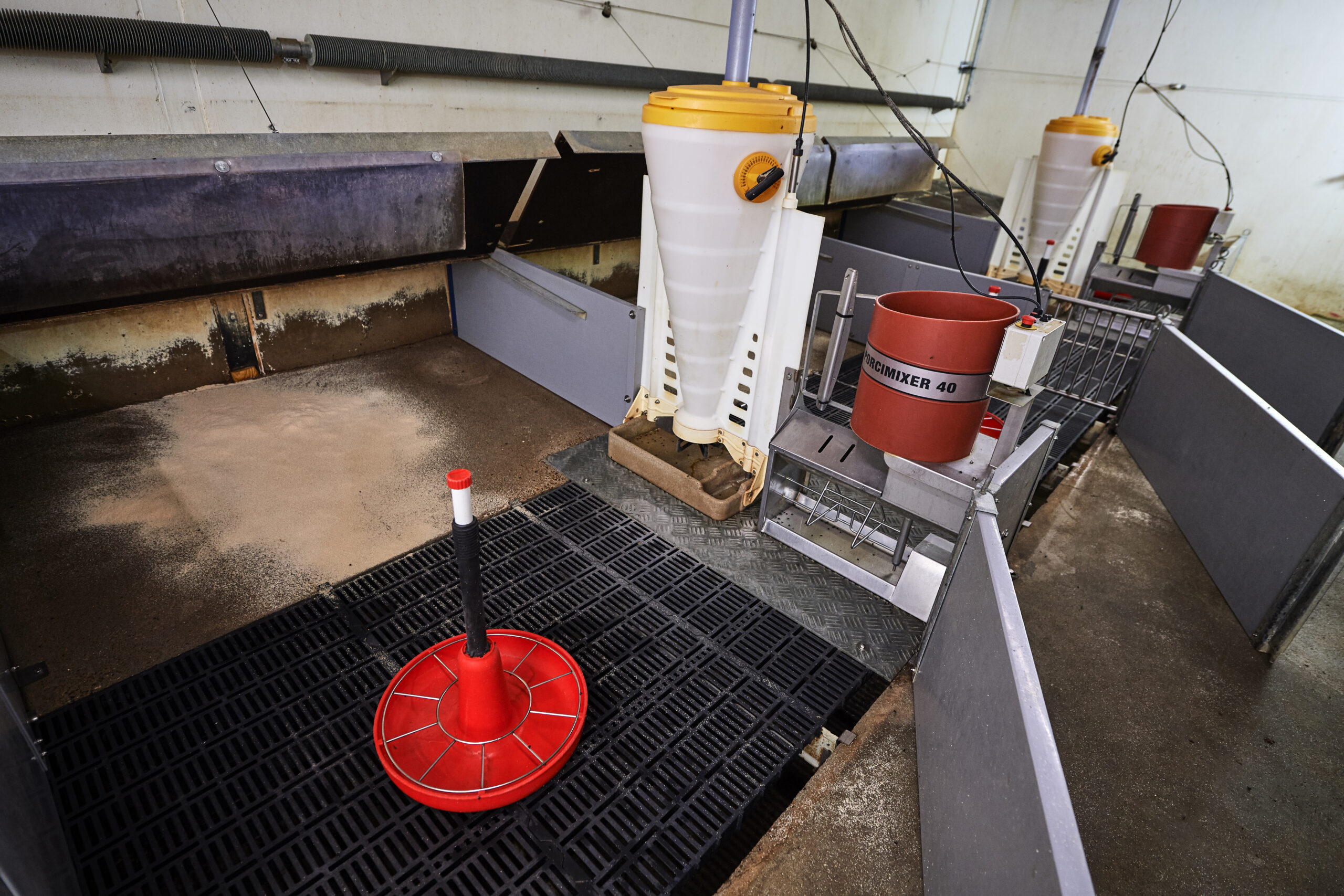 |
- Water pipes, cups, and nipples, cleaned and disinfected.
- Residues of water from cleaning in feeders and drinkers must be removed for proper drying.
 |
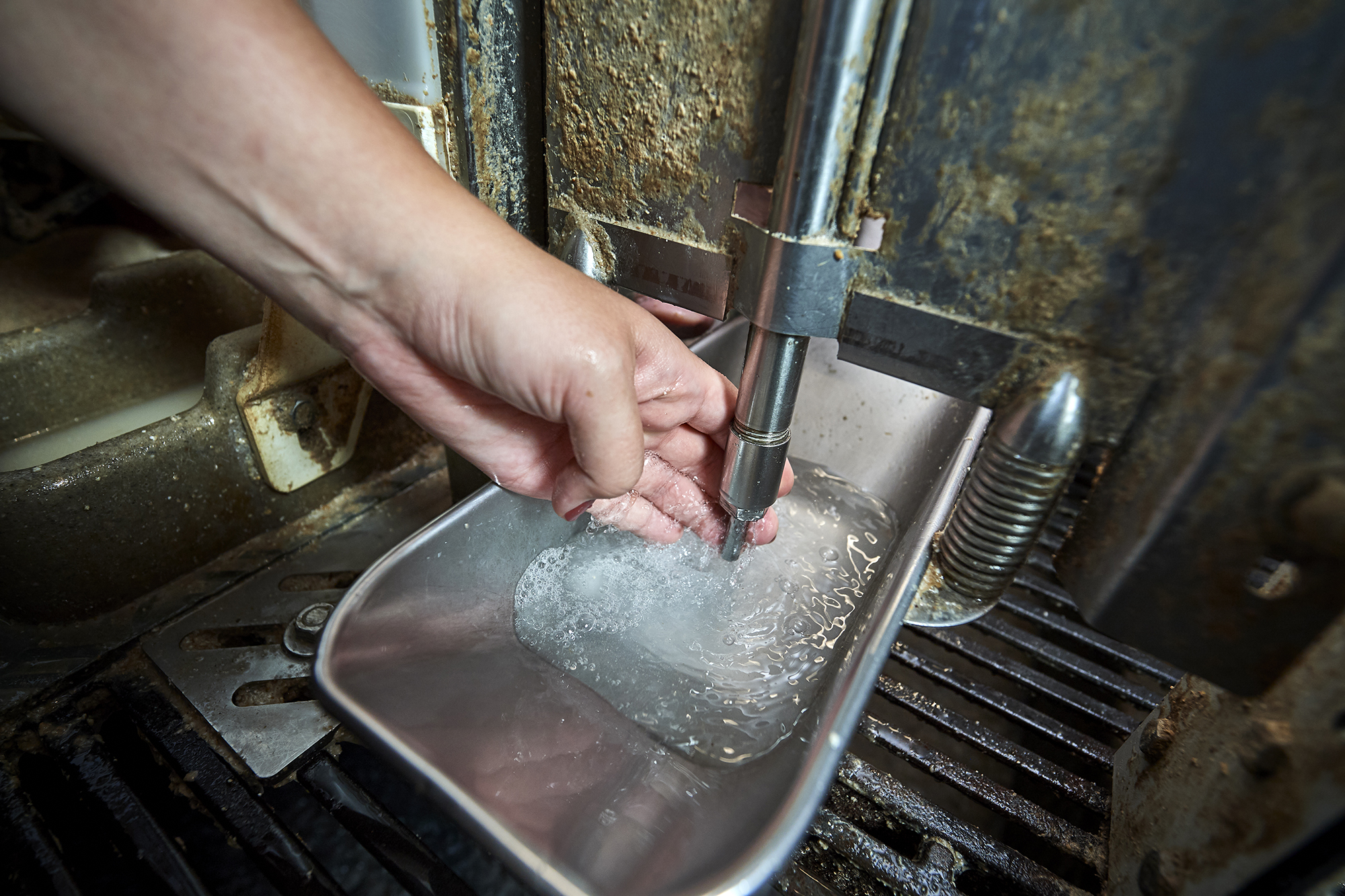 |
- Environment control setting the ambient temperature at 28 °C and humidity below 75 % in week 1.
- For every week reduce the ambient temperature by 1 – 2 degrees, depending on the behavior of the pigs.
 |
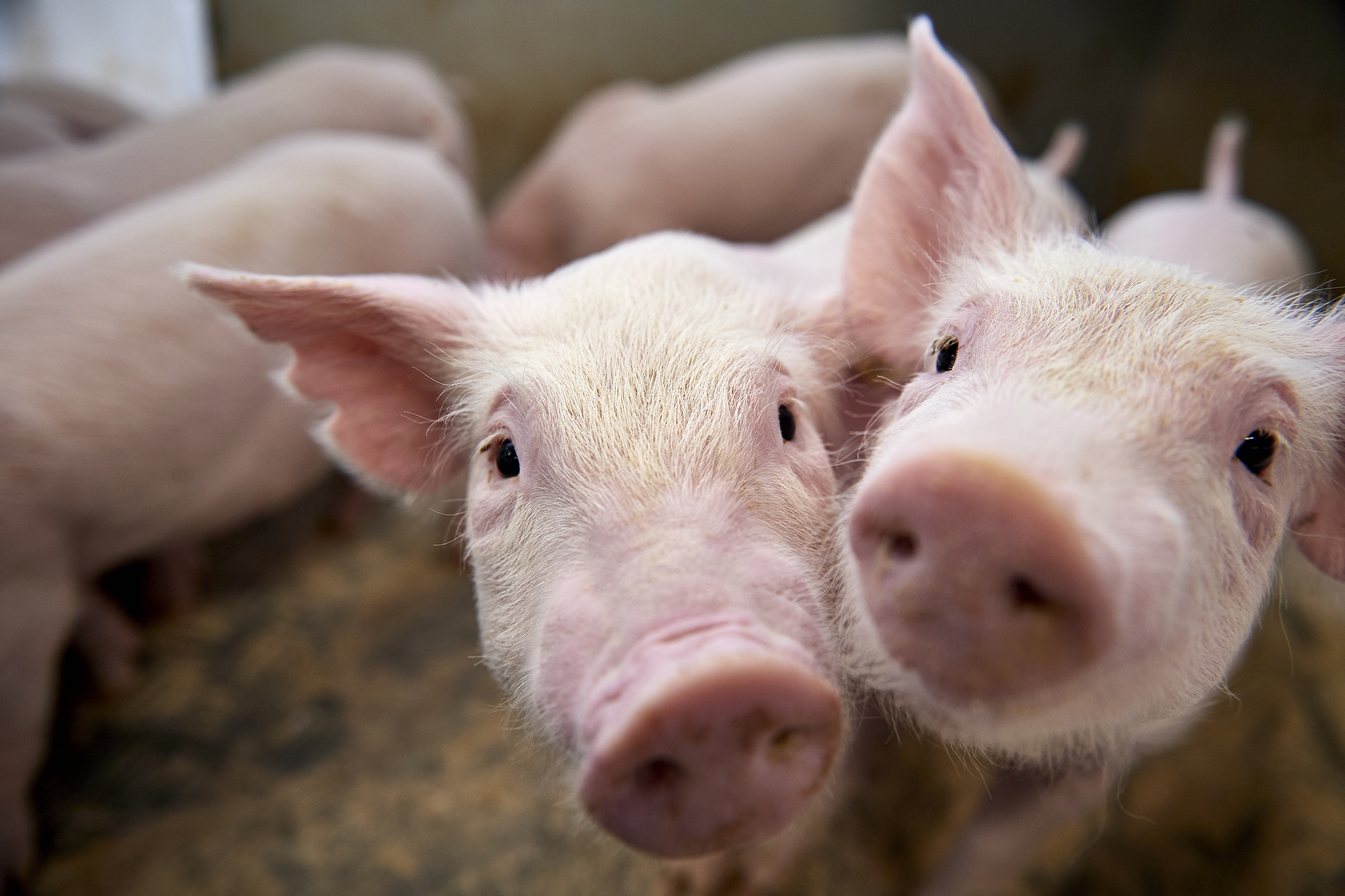 |
- Minimise the number of litters mixed in one pen to reduce cross pig infections.
- Collect the smallest piglets in separate pens for better inspection, care, treatment, feeding, etc.
- Have feed and clean water ready for piglets to start with.
- Ensure piglets have access to feed and water is 24/7 from day 1
- In the first 2 – 3 days, activate/stimulate the piglets every 2 hours to eat and drink. Use a long trough feeding or floor/mat feeding with space for all piglets to eat together. The use of feed + water, 1:2 (gruel feeding) is even better as long as the pigs do not get wet.
- The more dry feed the piglets ate before weaning the faster they will start eating after weaning. The piglets only having milk before weaning will tend to wait before starting to eat after weaning and they will be at risk of diarrhoea. These piglets need our training.
|
|
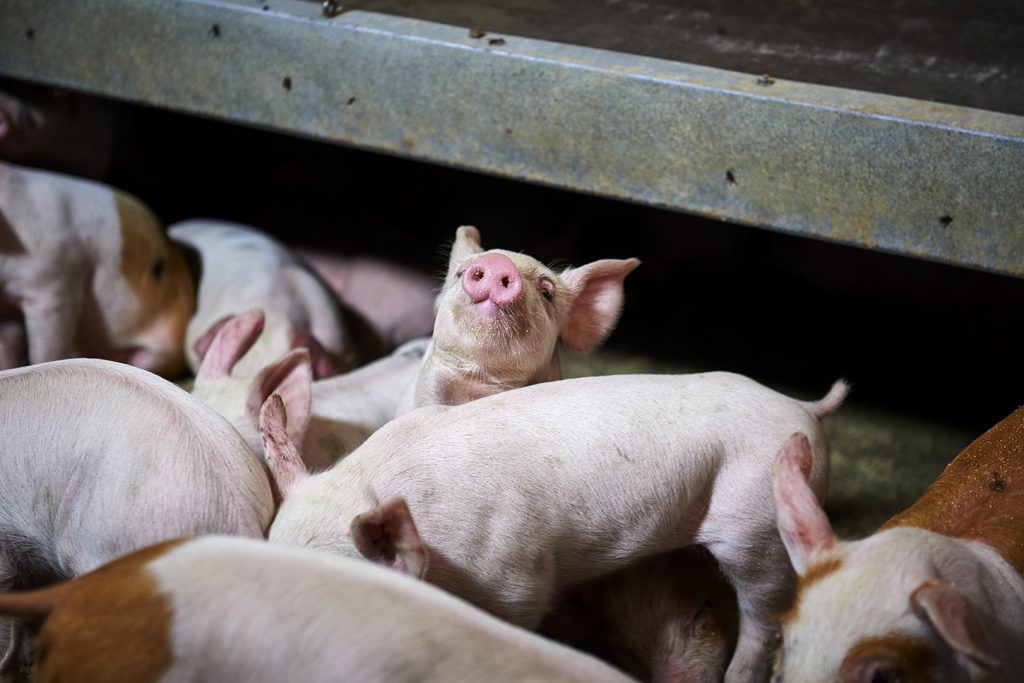 |
- For every section in the nursery use separate boots and hygienic powder on the floor.
- The first 7 days post weaning add some potato starch (10 grams/pig) and rolled barley/oat (100 grams/pig) onto the pen floor or in the feeder. Continue with rolled barley/oat for another 7 days. In pens with clear signs of diarrhoea use potato starch every day.
- Allow 2 – 4 days with every diet change for a smooth transition.
- Controlling the diet change, the table shown below is useful. It will save money because workers adjust more according to piglet size and not days.
- Attention for every pig every day and individual care and treatment when needed.
- Have hospital pens ready for sick pigs and use them.
Reduce antibiotics and zinc oxide
During the development of new strategies under the restriction of using less antibiotics and zinc oxide (ZnO), a low protein strategy has emerged in the first phases; 6-9 kg and 9-15 kg.
Solving issues with post-weaning diarrhoea has proven efficient using diets low in crude protein, even as low as 16 – 17 %.
The challenge with low crude protein is that growth performance is reduced and piglets cannot compensate for such low levels of protein, and the addition of extra additives has not proven efficient for this situation.
To anticipate post weaning issues it is important to understand the effects of the anti-nutritional factors in the feed ingredients. By ensuring that the nutritional requirements are met by using the most effective combination of high-quality raw materials, as a soy/vegetable only ingredient strategy at all growth stages, and supplying the correct additives for the pigs will support the growth of the pig in the most optimal way using less antibiotics and zinc oxide.

